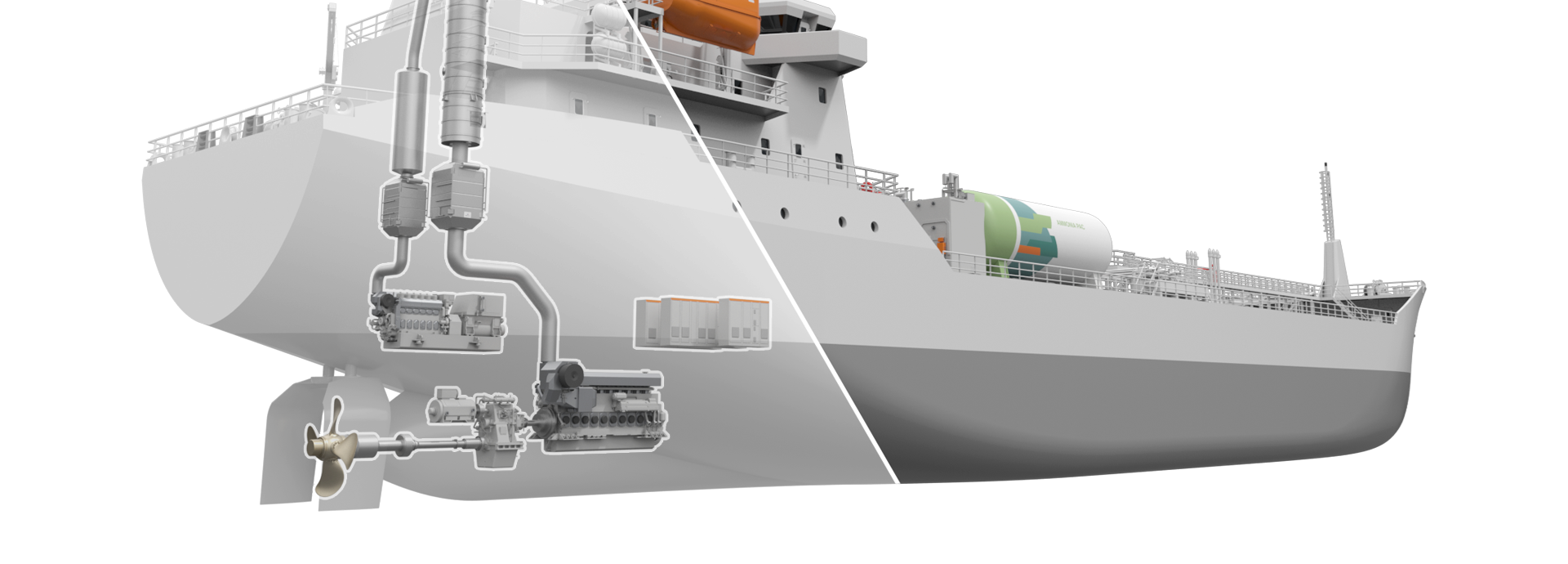
About Energy
About Marine

How can you ensure that the propulsion system on your short sea shipping vessel delivers reliability, high manoeuvrability and low or even zero-emission operation? Are you searching for a clear path towards efficient decarbonisation? A partner who can help you strike the perfect balance between performance and flexibility through optimal integration of each and every component can answer these key questions and more.
Whether you’re operating a short sea tanker, feeder or bulker, your vessel – and your business – can reap the rewards of a smart, modular hybrid propulsion system that can be tailored to your specific needs and vessel operating conditions. Our solutions can incorporate a fuel-flexible medium-speed main engine, a geared propeller system, a shaft motor/generator (PTO/PTI) and a battery-based Energy Storage System (ESS). All of these are optimised using an integrated energy management system (EMS).
Read on to learn how you can navigate the decarbonisation challenges ahead with a flexible, future-proof propulsion setup that aligns with your business strategy.
Short sea tankers
Tanker vessels operating on short sea routes must typically meet a varied range of operational requirements. They may be chartered on short-term agreements with different voyage distances, load conditions and sailing speeds. Optimising vessel CAPEX and OPEX are crucial to securing profitability and competitiveness.
Short sea feeders
Feeder vessels are typically small container vessels that transport containers from smaller hub ports to larger regional terminals. Compared to other vessel types in the short sea shipping sector feeders operate more predictable routes, matching the mainline traffic between the hubs they serve. Optimising OPEX is the key to profitable and competitive operations.
Short sea bulker vessels
Short sea bulker vessels must typically meet a large range of operational requirements. They can be chartered on short-term agreements, with highly variable voyage distances, loading conditions and sailing speeds. Optimising vessel CAPEX and OPEX are crucial to securing profitability and competitiveness.
A building block approach
Reducing emissions and increasing operational flexibility are the main drivers behind the development of the Wärtsilä Smart Propulsion System. This highly adaptable, modular propulsion concept can be customised through a data-driven design process and offers advanced system functionalities that help you to address variable operation conditions.
The hybrid system includes a fuel-flexible medium-speed main engine, a geared propeller system, a shaft motor/generator (PTO/PTI) and a battery-based energy storage system (ESS) as well as an auxiliary genset. An integrated energy management system (EMS) ensures that the various elements are optimally integrated for maximum benefit.
Hover or click on the symbols to reveal more information on the six parts of the integrated solution.
A detailed analysis of alternative propulsion machinery systems with an open and transparent benchmarking of the alternative solutions, based on parameters such as GHG emission, CAPEX, OPEX, EEDI and CII.
This analysis is complemented with a detailed technical specification that presents the scope of supply to assist you in integrating the propulsion machinery system into your vessel specification.
Finally, a functional specification describes how the proposed propulsion machinery systems will be integrated and operate and details their functionalities and operational modes. This helps you to understand the full potential of the solution and ensure its successful integration into the vessel design.
Expand all